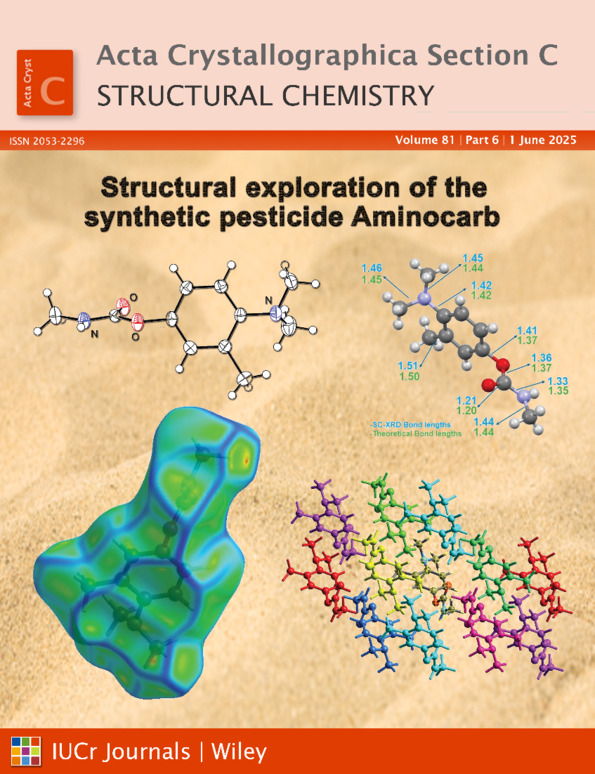Investigation into the third-order nonlinear optical properties of a three-dimensional cobalt(II) coordination polymer constructed from naphthalene-1,4-dicarboxylic acid and 4,4′-({2,2-bis[(pyridin-4-yloxy)methyl]propane-1,3-diyl}bis(oxy))dipyridine
Abstract
A novel cobalt(II) coordination polymer, poly[diaqua[μ-4,4′-({2,2-bis[(pyridin-4-yloxy)methyl]propane-1,3-diyl}bis(oxy))dipyridine]bis(μ-naphthalene-1,4-dicarboxylato)dicobalt(II)], [Co2(C12H6O4)2(C25H24N4O4)(H2O)2]n or [Co2(1,4-nda)2(PDP)(H2O)2]n, (1), has been successfully synthesized through the hydrothermal reaction of CoCl2·6H2O with naphthalene-1,4-dicarboxylic acid (1,4-ndaH2) and 4,4′-({2,2-bis[(pyridin-4-yloxy)methyl]propane-1,3-diyl}bis(oxy))dipyridine (PDP). Compound (1) features a robust three-dimensional framework intricately interconnected by 1,4-nda2− and PDP spacers. Topological analysis identifies this architecture as a (4,4)-connected net with point symbol {36·46·513·63}. The UV–Vis spectrum displays an intense ligand-centred π→π* transition band at 305 nm. Z-scan measurements at 532 nm (7 ns pulse) demonstrate strong reverse saturable absorption activity with an absorption coefficient of 2.68 × 10−7 m W−1. This compound is anticipated to be a promising candidate for applications in third-order nonlinear optics.




